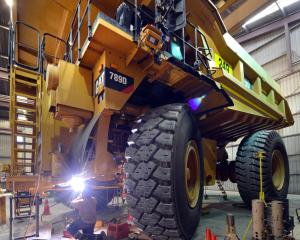Before the last election, the mining industry was quietly but methodically lobbying the National Party, while in opposition, to open protected areas, talking up the potential of billions of dollars in mineral value which could possibly underpin economic recovery.
The Government announced in Otago last August it was undertaking a minerals stocktake throughout the country, which proposed 7000ha of protected schedule 4 land, protecting 13% of the country from mining, would be made available for exploration.
The proposal incensed environmentalists, sectors of the tourism industry, the Green Party and Forest and Bird, culminating in 37,500 submissions, a petition of 47,000 and a large protest in Auckland.
"A victory for common sense," was Green Party co-leader Metiria Turei's reaction yesterday.
"You look after the things you love, and thousands of New Zealanders have reminded [Prime Minister] John Key of this simple truth over the last year. As a result, we've changed the agenda on mining in New Zealand," she said in a statement yesterday.
Energy and Resources Minister Gerry Brownlee and Conservation Minister Kate Wilkinson - who maintained the decision was based on "a genuine consultation process" - said no land would be taken out of schedule 4, a total 14 already-proposed areas would be added to schedule 4 and future national parks and marine reserves would automatically come under schedule 4 protection.
Included in the proposed 14 areas, totalling 12,400ha, to come under the schedule 4 umbrella by October is Dunedin's recently opened 236ha Orokonui Nature Reserve, near Waitati.
Mr Brownlee said: "Essentially, the discussion process identified where the minerals industry can and can't go.
"As many people have pointed out, around 85% of the country is not protected by schedule 4, and a great deal of that land has mineral potential."
The aerial surveys of the West Coast and Northland would cost about $4.5 million, using both magnetic and radiometric surveying techniques, and Mr Brownlee anticipated results from the airborne surveys would "increase exploration interest and consequently, investment, in the area".
In Otago, gold explorer and boutique producer Glass Earth Gold, funded $1 million from the Otago Regional Council, carried out a similar $4 million, 1.3 million ha aerial survey of Otago in 2007, to pinpoint areas of interest.
It was the largest permitted area and survey type of its kind in the country.
Glass Earth has spent about $25 million, mainly in Otago, since listing on the stock exchange in October 2006.
New Zealand Minerals Industry Association chief executive Doug Gordon said "we respect and accept" the Government's decision, based on New Zealanders being "not ready for this, at this time".
"It has not been a waste of time. It has been an extremely worthwhile exercise in gauging the public's will and from which valuable policy settings will have resulted," he said in a statement.




